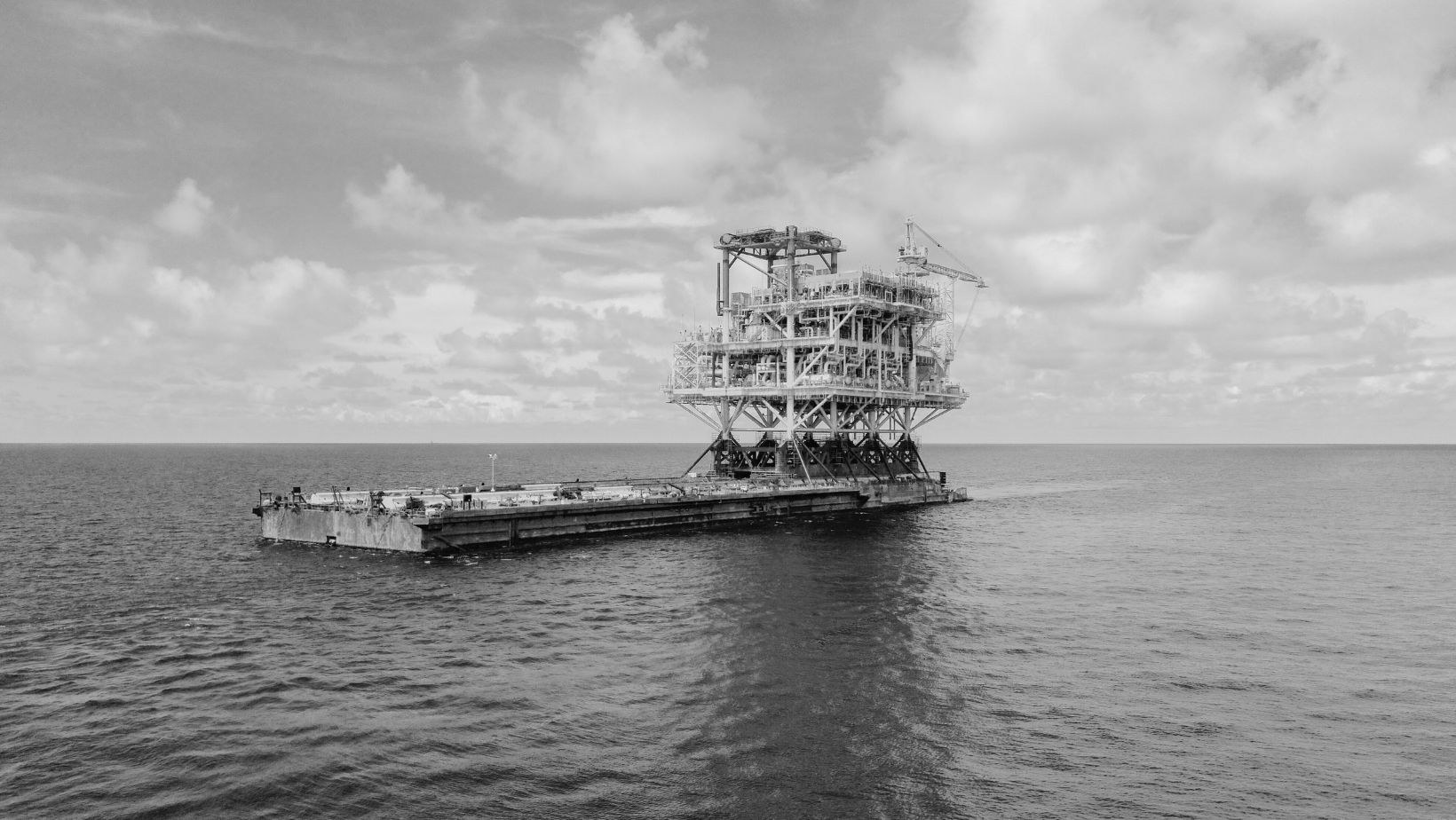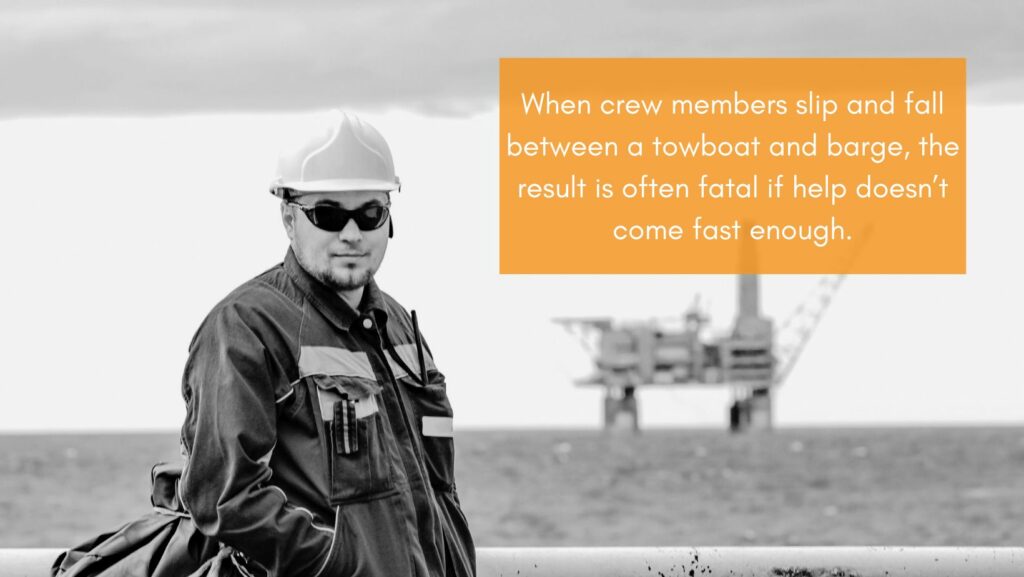
Tugboat and barge workers are especially susceptible to danger while working on inland waterways. Despite OSHA barge safety guidelines for preventing slips on deck, wearing floatation devices, and maintaining equipment to prevent accidents, dangerous and often fatal incidents still occur. According to a recent Coast Guard-American Waterways Operators Annual Safety Report, from 2000 to 2022, falls into water accounted for 44% of fatalities, followed by asphyxiation (18%), being crushed between objects (11%), and being struck by moving objects (10.5%).
Engineers in the industry are constantly researching methods for safer barge operations, with some of their inventions already being implemented and others still in the works. Here are recent innovations to address top safety concerns in the industry.
Detecting Breakaways
Breakaways pose a risk to crew members, bridges, docks, and surrounding boaters. After learning of multiple barge breakaways—one of which snapped its mooring cables and was stopped by a towboat just short of striking a bridge on the Tennessee River—River Transportation Technologies developed the Intelli-Barge sensor system to prevent such potential disasters. It consists of an electronics board and an array of wireless modules that report on various conditions of the barge, including connections to a towboat or shore. If a barge becomes loose, it sends out a signal that can be picked up by any passing towboat. The sensor array includes an accelerometer and GPS locator, so the barge can be tracked at all times.
Safer Lid Lifting
For fleets, barge cleaners, and cargo shifters, one point of concern has always been removing and replacing lids atop hopper barges. Typically, one person has to operate a crane or lift while another person climbs aboard the barge wearing harnesses and hard hats to secure the lid with hooks. If harnesses fail or the lid is dropped, the entire process is risky. To keep crew members from having to board the barge during this process, CIS Marine Division, a subsidiary of CIS Contractors & Industrial Supply Company Inc., created X-Factor. It’s a barge lid-removal system that can be operated remotely to capture the four d-rings on the barge cover, release the cover latch, and lift the cover off the barge. It can also be used to replace the lid. The company is working with a large-scale grain terminal operator to stack multiple X-Factors into a system capable of lifting the lids off multiple barges simultaneously.
The X-Factor system received the 2018 Portland Cement Association’s Safety Innovation Award, which honors the shared effort by LaFargeHolcim US and CIS to improve materials handling and distribution while reducing human risk.
Laser Loading Capacity
Measuring loading capacity with a tape measure poses safety risks to workers who must stand near the edge of a barge for precise dimensions. With the help of LIDAR technology (light detection and ranging via laser pulse), CIS created DraftEye to measure the draft, roll, pitch, and yaw of a barge. The system allows barge loaders to input measurements, and then a sensor calculates load capacity based on the barge’s position relative to water levels. Barges of variable lengths may be measured through multi-band beam detection. Data is stored in the cloud, making it easy to retrieve and review.
Lowering Tank Cleaning Emissions
Industry safety standards require that before work is performed on inland barge tanks, the tank environment must be gas-free to ensure a safe environment for the crew and vessel. Environmental emission requirements in certain areas also demand that tank emissions be mitigated by a flare or equivalent method until the tank reaches concentrations as low as 50 ppm. To solve the inherent risks of removing hazardous and explosive gasses from maritime tanks, NanoVapor created a non-toxic, non-flammable, non-reactive, and biodegradable liquid suppressant called TankSafe. While traditional degassing methods draw fresh air through the barge tanks to a flare until the required fuel vapor concentration is reached, this fuel vapor suppressant achieves a safe tank environment without a reduction in tank oxygen levels.
There are no reactive chemicals or inert gasses involved with NanoVapor TankSafe, so breathable air is never displaced and normal oxygen levels are maintained throughout the confined tank space.

Preventing Crushing Between Vessels
When crew members slip and fall between a towboat and barge, the result is often fatal if help doesn’t come fast enough. The Maritime Safety Wedge was invented to maintain space between vessels to prevent overboard workers from being crushed while being rescued. It’s made from a pressure-treated 12-by-12-inch beam, square on one end and tapered to a point on the other, then dipped in rubber. At just under 40 pounds, it can be stored on a simple mounting bracket that can be installed in any easy-to-reach location on the towboat or barge. The first shipments of the Maritime Safety Wedge were sent out in June 2022, and so far, 220 units have been installed on 115 barges and several towboats. While this barge safety device doesn’t require any buttons or technology, it offers a lifesaving solution that could make a big difference on your barge.
Are You Doing All You Can to Keep Crew Members Safe? Here’s How BargeOps Can Help
While efficiency and optimization are big focuses of running a barge business, it’s not always easy to make barge safety a priority. With new, innovative solutions being introduced, accidents can be prevented by simply implementing small changes into your procedures.
When safe practices are not in place, “we didn’t have time” is a common excuse. This is somewhat true, as day-to-day operations can’t always be halted to focus strictly on safety. But BargeOps can help streamline those daily tasks so they take less time. Our software improves communication between shore and boat, minimizes billing paperwork, and keeps track of manpower so you can focus more on what matters most: Your people. To learn more about what BargeOps can do for your operation, schedule a free call today.


